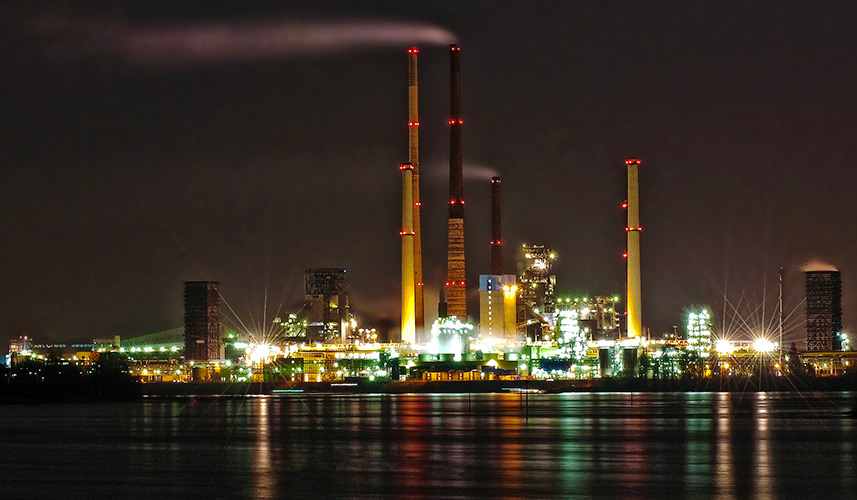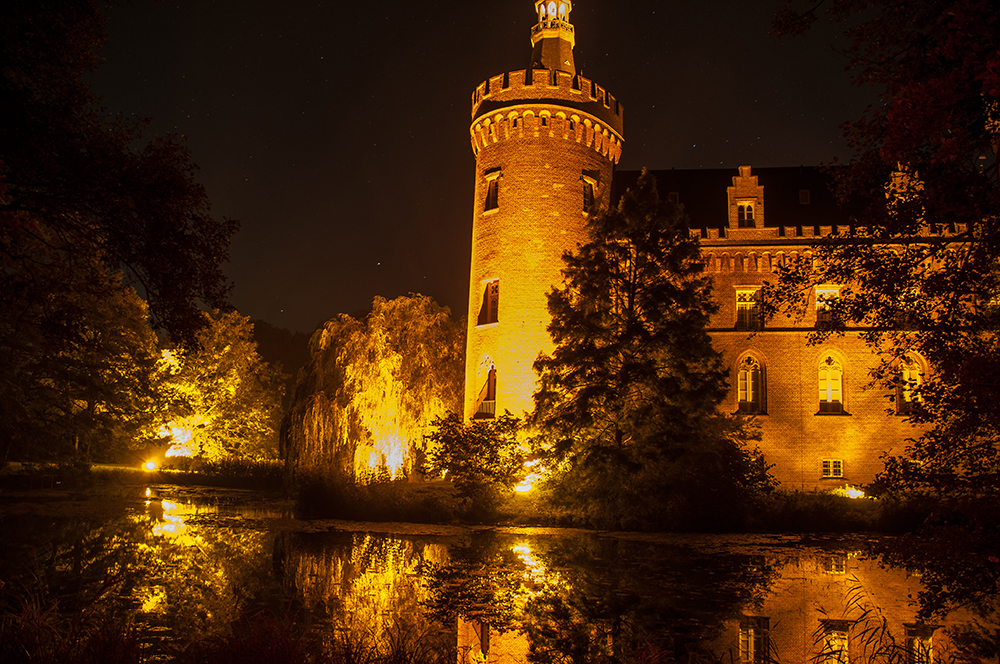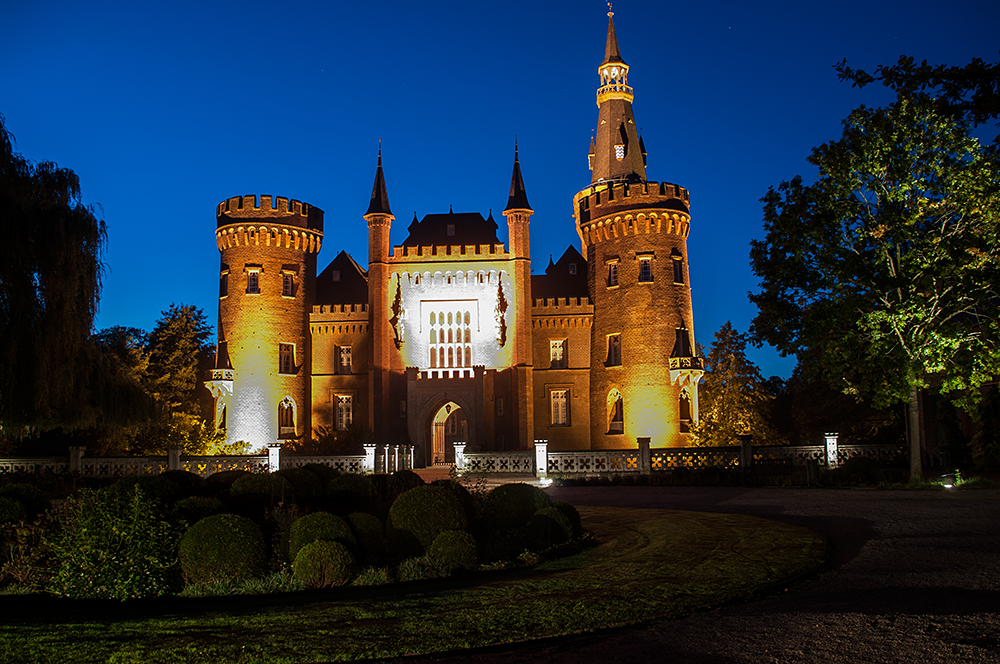
Thyssen-Krupp, Duisburg Germany
What do you need for good night shots?
1. A DSLR camera or a mirrorless camera e.g. from Nikon the Z series. (I named Nikon here because my equipment in relation to the camera is Nikon, but other manufacturers also work)
2. A suitable lens depending on the subject and the distance to the subject (it does not necessarily have to be an expensive lens with a constant light intensity of 2.8. It depends on the demands and the financial means.
3. A good tripod with a tripod head
4. A triggering device, which can be a battery handle with a radio trigger or a wired trigger. Nikon e.g. does not offer battery grips with radio trigger, but there are quite good ones e.g. from Meike that you can get new for less than 100 euros, that's about 1/3 from Nikon org. Handle that cannot be triggered by radio. If you don't want to spend the money on the 2 mentioned triggers, you can also take the pictures with the self-timer.

Castle Moyland Kleve Germany
Why is point 3 and 4 very important?
to point 3:
Long-term exposures are made for night shots, so the exposure time can be 30 seconds or longer, depending on the lighting conditions. In order not to shake something like that, a stable tripod is essential. Super light tripods are nice for transport but are usually not stable. See also my article "I need a new tripod".
to point 4:
Night shots should be made with a DSLR camera with mirror lock-up, because if the mirror folds away, a minimal shock can reduce the sharpness. Triggering the camera with the normal shutter release also makes vibrations that make it slightly unsharp. To avoid blurring or blurring, proceed as described in point 4.
I do not want to go into points 1 and 2 here because you take what you have available.
When shooting at night, it makes sense not to have the camera on automatic because the cameras then set the smallest possible aperture. It is known that lenses with an open aperture do not have such a good imaging performance, so it is advisable to set a higher aperture, which of course results in a longer exposure time. You have to test for yourself how the lenses behave, it is advisable to always do a series of exposures at this point. I'm not talking about a series of exposures for HDR recordings where you want a fixed motif correctly, overexposed and underexposed to then create an HDR with software.
It is clear that lenses with a high light intensity are better suited for these shots, but there is also a huge difference in price. As an example, the Nikon AF-S Nikkor 24-85mm f / 3.5-4.5 ED VR Nikon FX is weaker and has a street price of around 530 euros. The Nikon model with adequate focal length, the Nikon AF-S Nikkor E 24-70mm f / 2.8 ED VR Nikon FX, has a street price of around 1630 euros (as of 09/2021).
What does a picture come from?
There are always 3 sizes, namely the exposure time, the aperture and the ISO value. The ISO value is set on the camera. The higher you set the ISO value, the more sensitive the camera becomes to light. For an analog camera, this size was the ASA value of the film. Anyone who still took analogue photos knows the higher the ASA value, i.e. the more light-sensitive the film, the more grainy the images were. With a digital camera, of course, there is no grain, but there is noise. The more light-sensitive the camera is, the higher the noise. On the digital images it looks roughly like the grain in the analog time. There are then small white pixels in the picture that do not actually exist.
You can't say at which ISO value is still acceptable noise, everyone has to find these values for their camera themselves. To determine this, you simply take several pictures from the tripod with the same motif and image section and set various ISO values on the camera.

Castle Moyland at the blue houer


